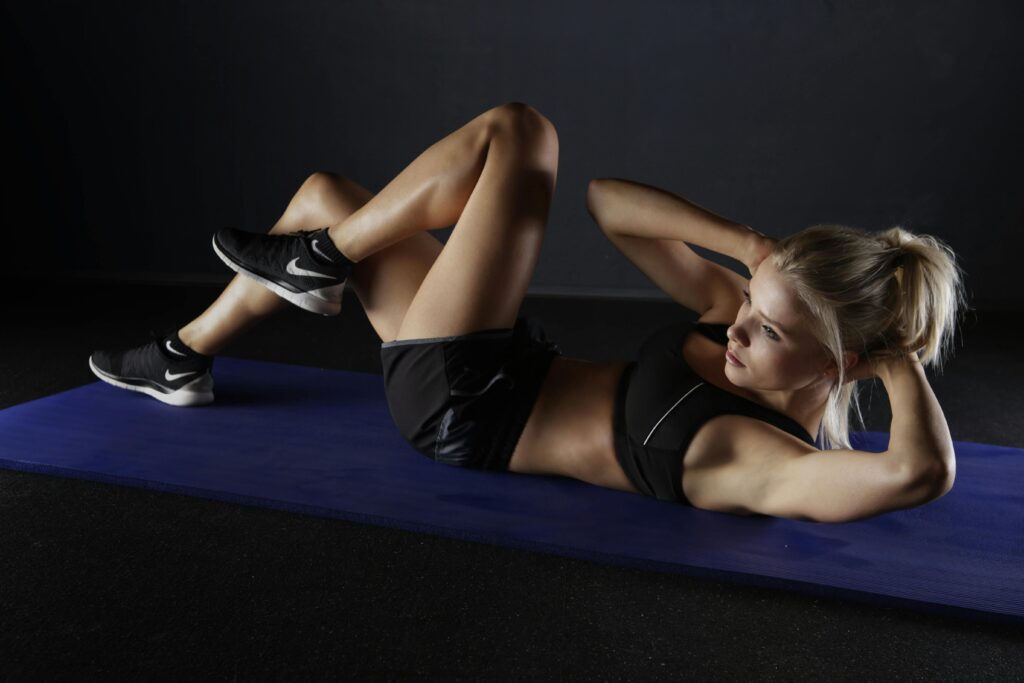1. Understanding Functional Fitness
In this section, we introduce the concept of functional fitness. We explain that functional fitness differs from traditional workouts by focusing on movements mirroring real-life activities. The keyword “Functional Fitness” is naturally integrated into the text.
Table of Contents
2. Tip 1: Mastering Compound Movements
This part delves into the importance of compound movements in functional fitness. We emphasize exercises like squats, deadlifts, and bench presses that engage multiple muscle groups simultaneously. The keyword “Compound Movements” is highlighted to capture the essence of this tip.
3. Tip 2: Embrace Bodyweight Exercises
Here, we discuss the versatility of functional fitness by introducing bodyweight exercises. The emphasis is on the accessibility and effectiveness of exercises like push-ups, pull-ups, and lunges without the need for specialized equipment. The keyword “Bodyweight Exercises” is seamlessly incorporated.
4. Tip 3: Prioritize Core Strength

This section focuses on the core aspect of functional fitness. We highlight the importance of exercises targeting core muscles, such as planks and crunches. The keyword “Core Strength” is emphasized to convey the central theme of this tip.
5. Tip 4: Incorporate High-Intensity Interval Training (HIIT)

Here, we discuss the incorporation of HIIT in functional fitness. The explanation includes the benefits of short bursts of intense activity and its impact on both immediate calorie burn and long-term metabolism. The keyword “High-Intensity Interval Training (HIIT)” is clearly stated.
6. Tip 5: Mix Cardio with Strength Training

This part stresses the need for a balanced approach in functional fitness by combining cardiovascular exercises with strength training. The keyword “Cardiovascular Exercises” is used to highlight the inclusion of both elements for comprehensive fitness.
7. Tip 6: Focus on Mobility and Flexibility

We explore the significance of mobility and flexibility in functional fitness. Dynamic stretches and mobility drills are suggested to enhance range of motion. The keyword “Mobility and Flexibility” succinctly encapsulates the essence of this tip.
8. Tip 7: Mindful Movement

In this section, the emphasis is on the mental aspect of functional fitness. We encourage mindfulness in movement, where individuals concentrate on each exercise for improved body awareness. The keyword “Mindful Movement” conveys the mental connection to physical activity.
9. Tip 8: Adequate Rest and Recovery
Here, we stress the importance of proper rest and recovery in optimizing fitness results. The recommendation includes sufficient sleep and activities like yoga for mental rejuvenation. The keyword “Rest and Recovery” encapsulates this tip’s core message.
10. Tip 9: Stay Consistent
This part underscores the significance of consistency in any fitness journey. Achievable goals and celebrating progress are mentioned. The keyword “Consistency” succinctly communicates the key principle of this tip.
11. Tip 10: Listen to Your Body

Finally, we wrap up with the importance of listening to one’s body. Adjusting the workout based on signals of fatigue is emphasized. The keyword “Listen to Your Body” encapsulates the crucial aspect of self-awareness in functional fitness.
Conclusion
The conclusion summarizes the key takeaways and encourages readers to embark on a transformative functional fitness journey. The keyword Fitness is reiterated, emphasizing its game-changing impact on overall well-being.
FAQ’s
Q1: What is Functional Fitness?
A: Functional fitness is a training approach that focuses on exercises and movements that mimic real-life activities. The goal is to enhance overall strength, balance, flexibility, and coordination, contributing to improved performance in daily tasks.
Q2: How is Functional Fitness Different from Traditional Workouts?
A: Unlike traditional workouts that often isolate specific muscle groups, functional fitness involves movements that engage multiple muscles simultaneously. It prioritizes the integration of exercises to improve overall functional abilities.
Q3: Why Are Compound Movements Important in Functional Fitness?
A: Compound movements, such as squats, deadlifts, and bench presses, engage multiple muscle groups, promoting better coordination and overall strength. They form the foundation of functional fitness, ensuring a comprehensive full-body workout.
Q4: Can I Practice Functional Fitness Without Gym Equipment?
A: Absolutely! Bodyweight exercises like push-ups, pull-ups, and lunges are excellent for functional fitness and can be done anywhere, making it accessible to individuals without access to gym equipment.
Q5: What Role Does Core Strength Play in Functional Fitness?
A: Core strength is crucial in functional fitness. Exercises targeting the core muscles, such as planks and crunches, not only enhance stability but also contribute to better posture and injury prevention.
Q6: Why is High-Intensity Interval Training (HIIT) Recommended in Fitness?
A: HIIT involves short bursts of intense activity followed by brief rest periods. It is effective in burning calories during the workout and boosting metabolism for continued calorie burn post-exercise, making it a valuable component of fitness.
Q7: How Can I Incorporate Cardiovascular Exercises into Fitness?
A: Blend cardiovascular exercises like running or cycling with strength training. This combination not only improves cardiovascular health but also helps build lean muscle mass, offering a well-rounded approach to fitness.
Q8: Why is Mobility and Flexibility Emphasized in Fitness?
A: Mobility and flexibility are vital for improving the range of motion in joints. Including dynamic stretches and mobility drills in your routine enhances performance, reduces the risk of injuries, and contributes to overall fitness.
Q9: What Does “Mindful Movement” Mean in the Context of Fitness?
A: Mindful movement involves focusing on each exercise and its impact on your body. By concentrating on the present moment during workouts, you improve body awareness, leading to better results in fitness.
Q10: How Important is Rest and Recovery in Fitness?
A: Adequate rest and recovery are essential for optimal results in fitness. Ensure you get enough sleep and consider activities like yoga or meditation to promote mental and physical rejuvenation.
Q11: Why is Consistency Emphasized in Fitness?
A: Consistency is key to any fitness journey. By consistently following your fitness routine and setting achievable goals, you not only witness instant results but also build a foundation for long-term success.
Q12: Why Should I Listen to My Body in Fitness?
A: Listening to your body is crucial to avoid overtraining and injuries. Pay attention to signals of fatigue or discomfort and adjust your workout accordingly to ensure a sustainable and effective itness routine.


3 thoughts on “Game-Changing Functional Fitness Tips for Instant Results”